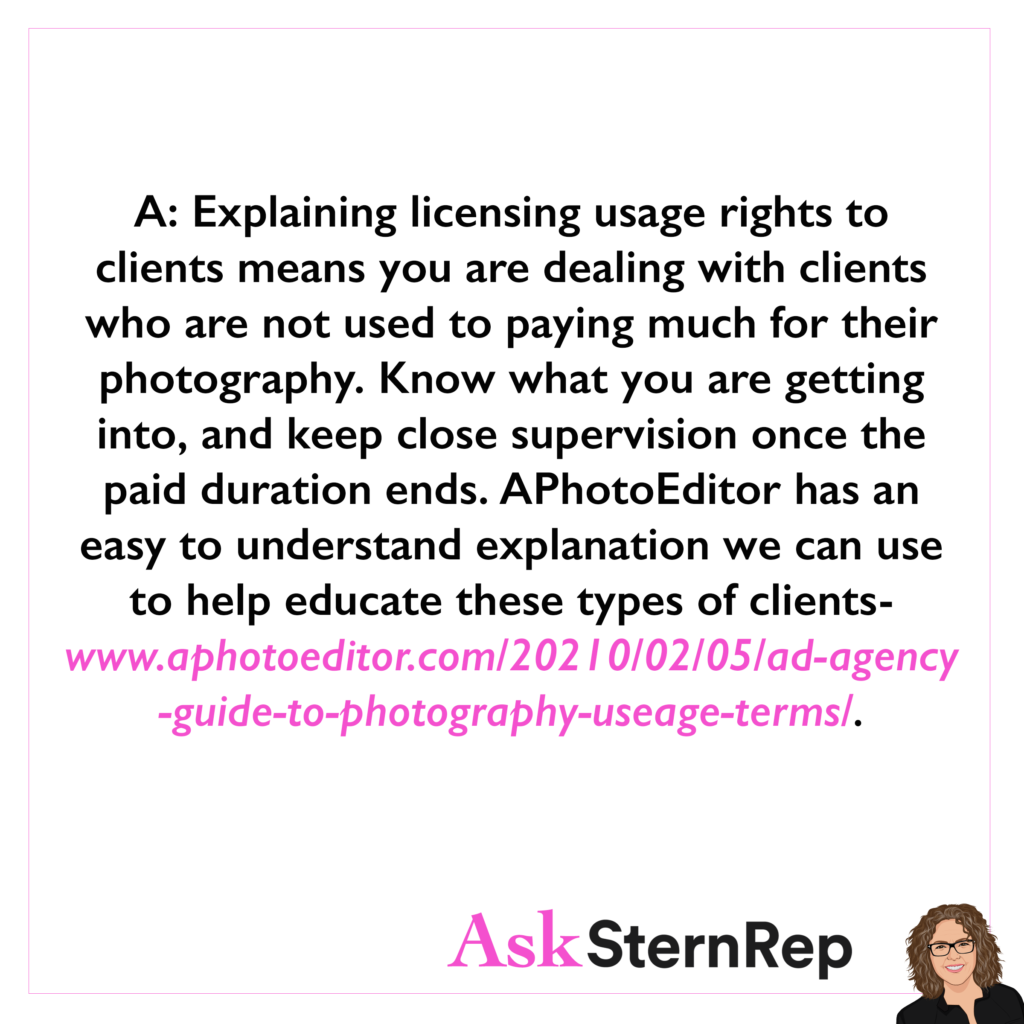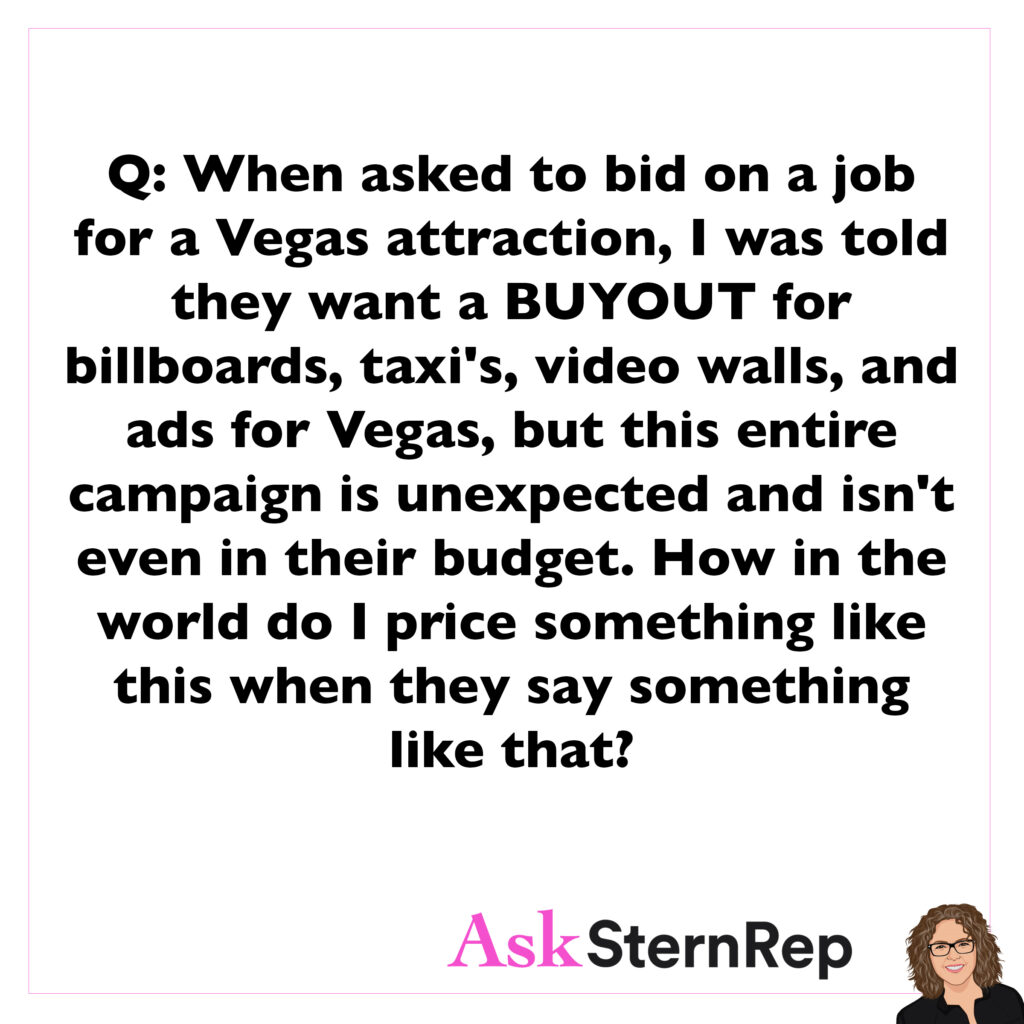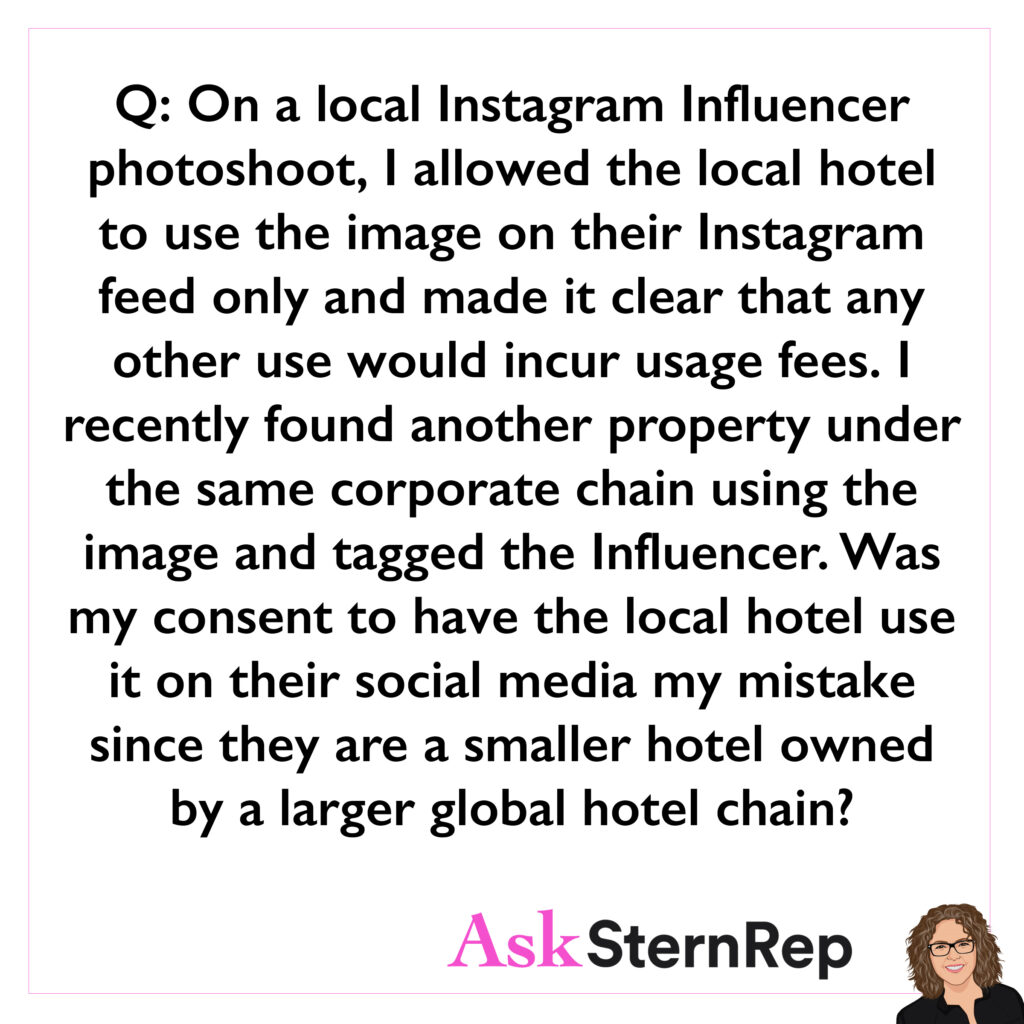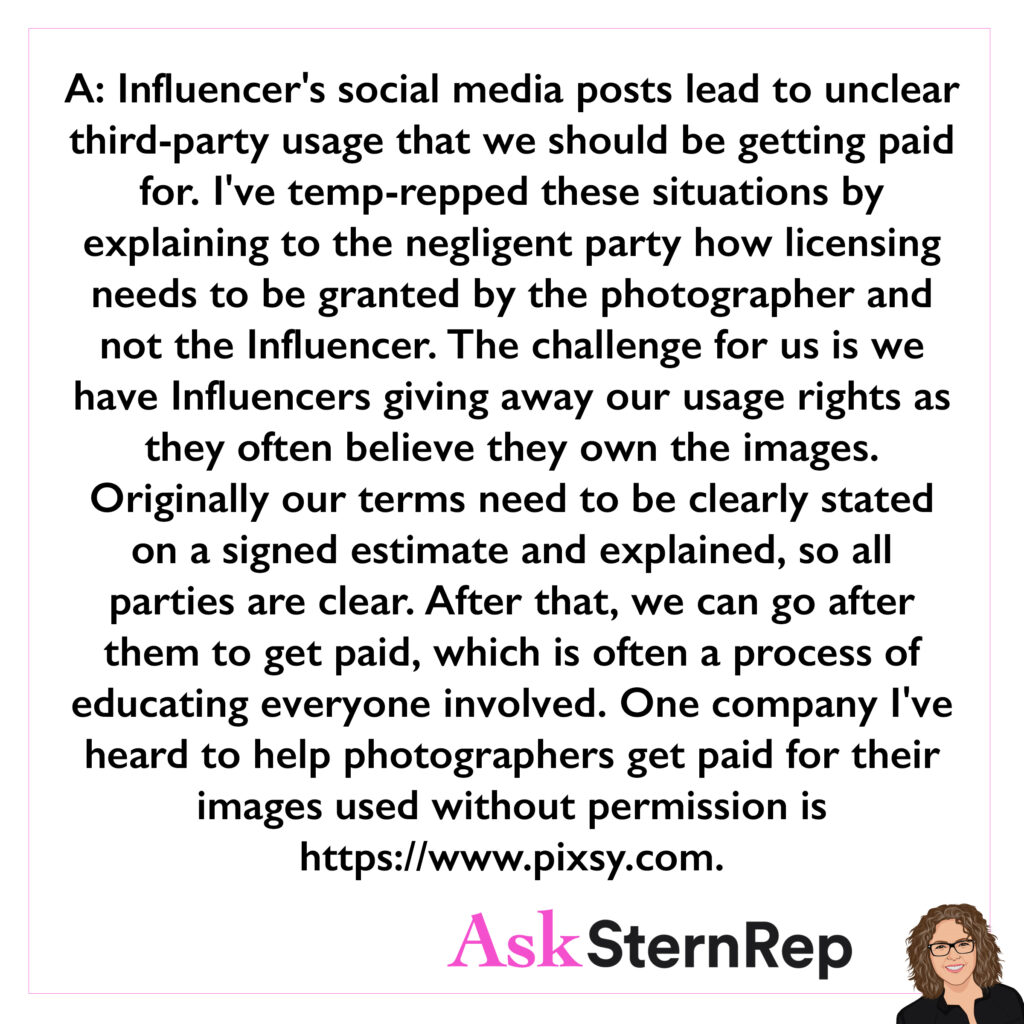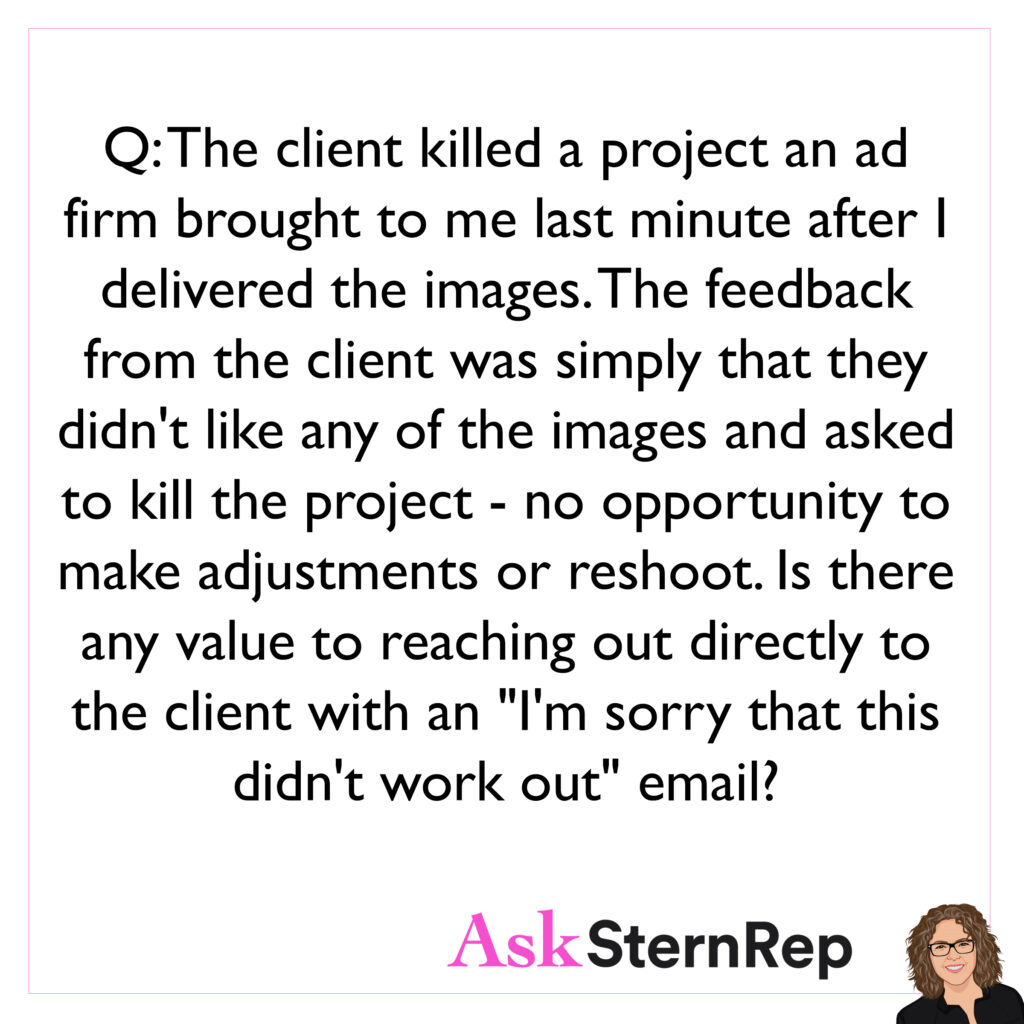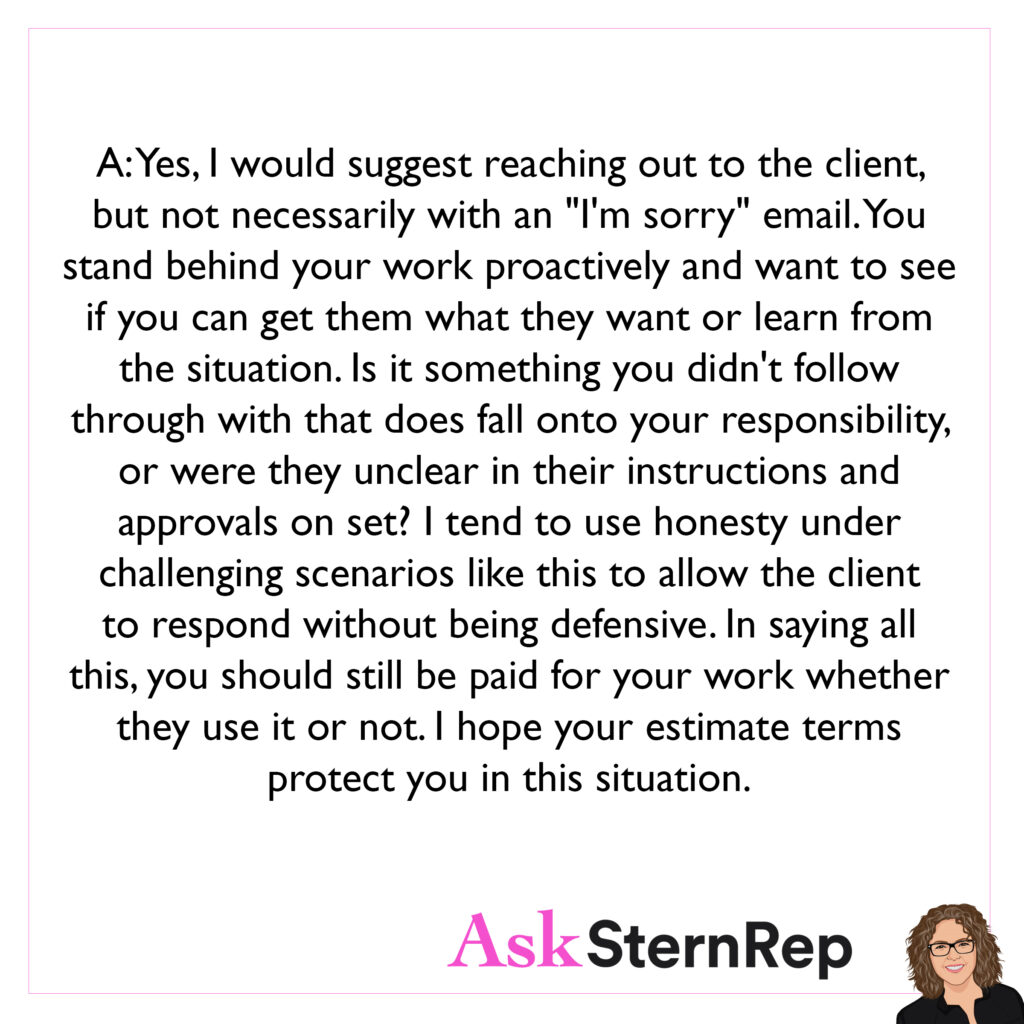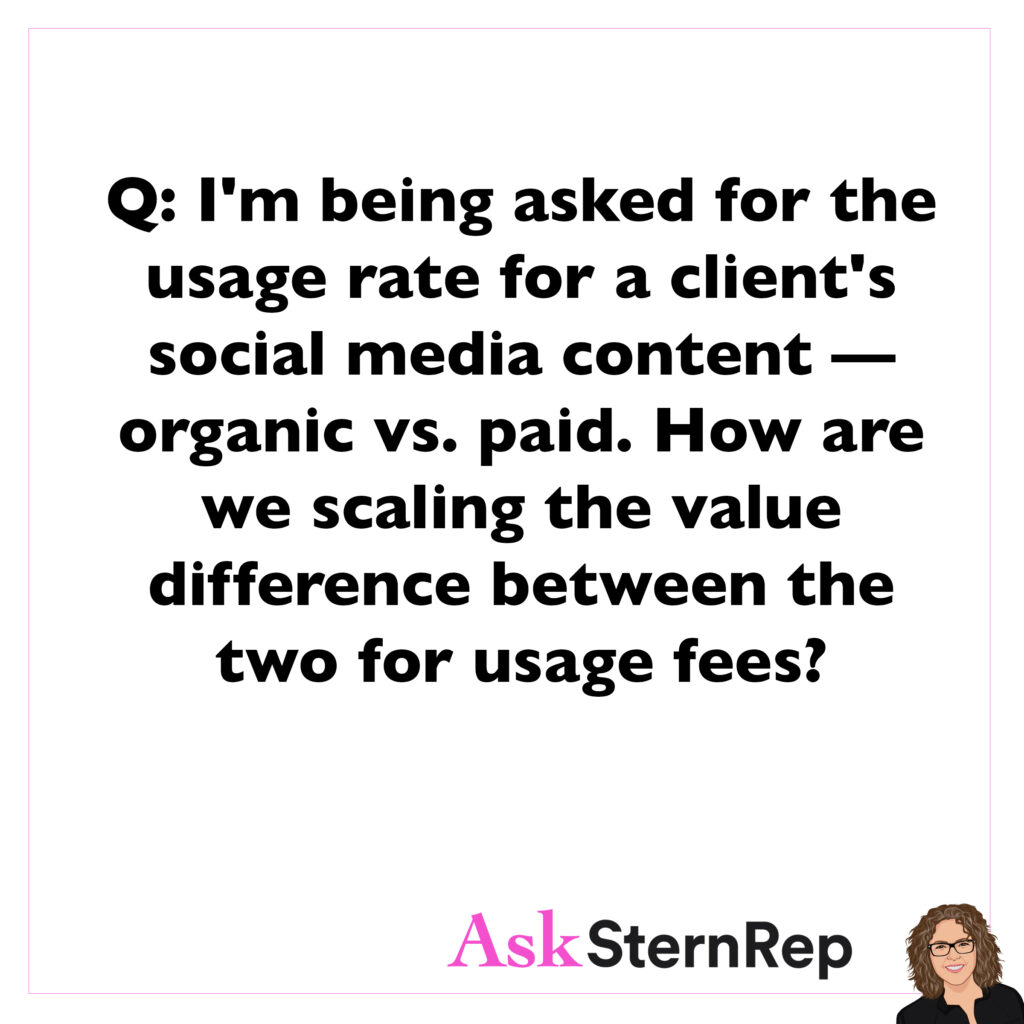
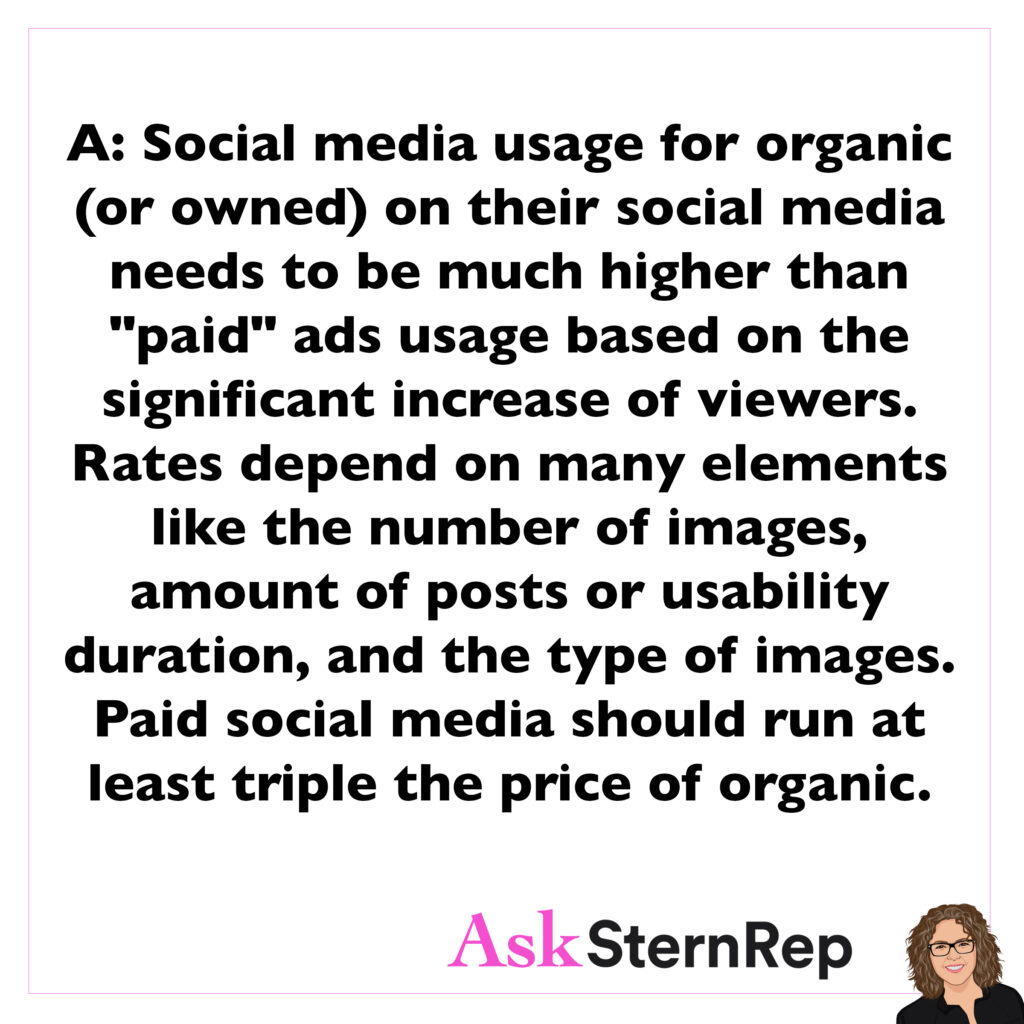
Q:
I’m being asked for the usage rate for a client’s social media content – organic vs. paid. How are we scaling the value difference between the two for usage fees?
A:
Social media usage for organic (or owned) on their social media needs to be much higher than “paid” ads usage based on the significant increase of viewers. Rates depend on many elements like the number of images, amount of posts or usability duration, and the type of images. Paid social media should run at least triple the price of organic.


